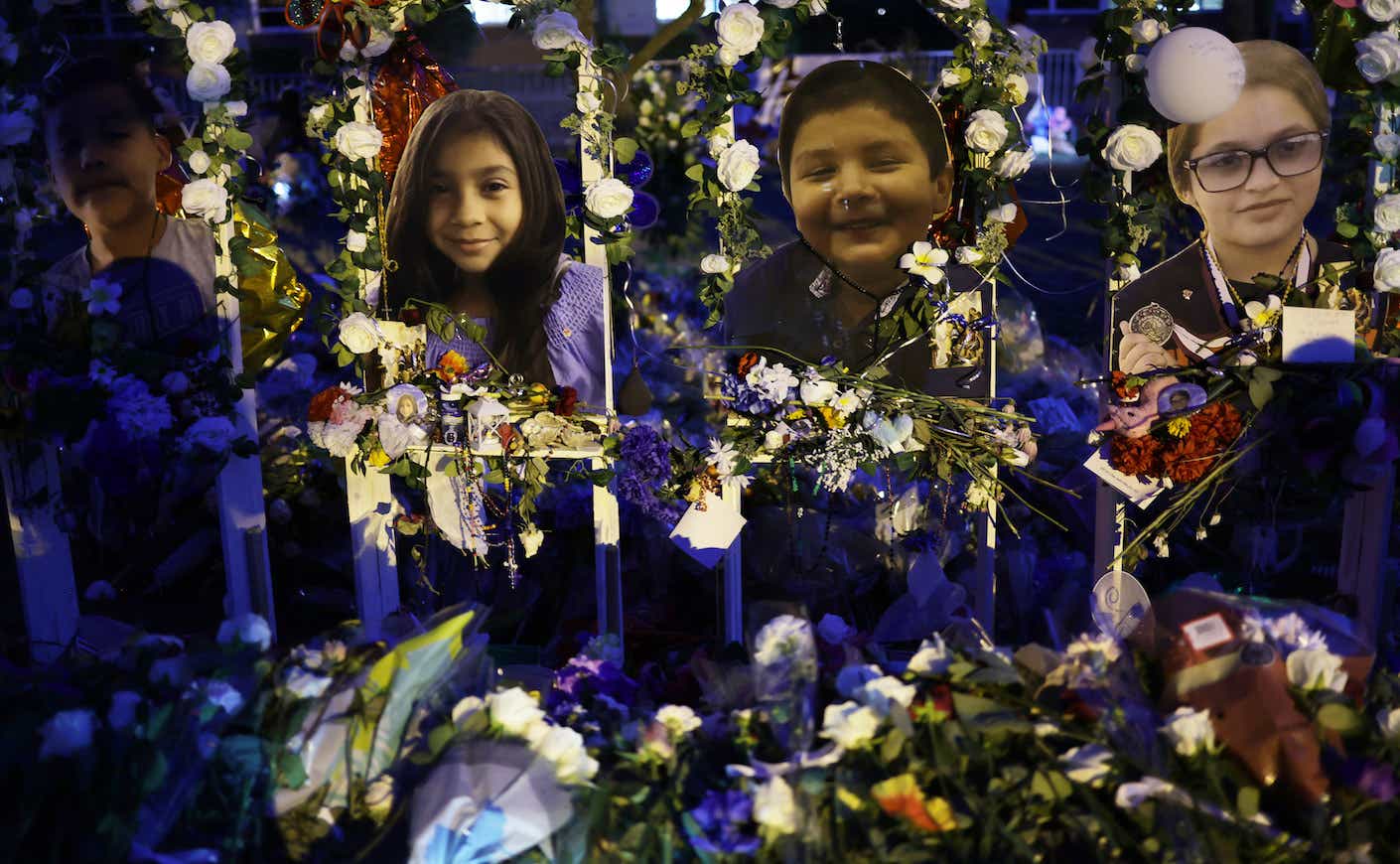In the days after every mass shooting in the U.S., the country gropes for solutions. There’s talk of “common sense” gun laws, assault rifle bans, tougher background checks, and in the case of a school shooting, how campuses can be better secured. Another question we seem to return to is whether showing the disturbing images from these crime scenes could have the power to change hearts and minds in the gun control debate, forcing lawmakers to act.
The question was recently raised in 2018 in the aftermath of the mass shooting at a high school in Parkland, Florida. A Slate piece titled “Show the Carnage,” argued that it was time for Americans to see the true effects of these tragedies. It quoted Kamala Harris, then a California Senator: “As a prosecutor…I had to look at autopsy photographs. When you see the effects of this extreme violence on a human body, and especially the body of a child, maybe it will shock some people into understanding this cannot be a political issue.”
It was also discussed in 2012 after 20 children were killed at Sandy Hook Elementary School. It was even debated back in 1999, after the Columbine High School shooting, when a local paper ran a prominent photo of a dead student without the family’s permission. In that instance, the student’s mother was initially upset with the publication, but over the next year she had a change of heart, Columbia Journalism Review writes. “A year and a half after the shooting, she wrote me a letter,” the editor told CJR. “She said ‘Y’know, I was wrong…I’m writing you to tell you to have the courage to show people the truth about what’s really happening in our society.’”
The conversation has resurfaced again after Uvalde — this time with the backing of some prominent figures in media. “Couldn’t have imagined saying this years ago, but it’s time — with the permission of a surviving parent — to show what a slaughtered 7-year-old looks like,” tweeted David Boardman, the former executive editor of The Seattle Times and the dean of Temple University’s journalism school. CNN’s Jake Tapper agrees.
They argue that seeing what a bullet does to a body could provoke a visceral response in the American public, strong enough to finally jolt our leadership to effect meaningful change. Powerful images have moved the needle before: Photos of Emmett Till’s brutalized body published in JET helped invigorate the civil rights movement and the cell phone video of George Floyd’s murder ignited protests nationwide.
Research shows that when readers feel emotionally connected to news events they’re more likely to change their opinions or take action, University of Oregon journalism professor Nicole Dahmen points out.
Photos and videos can certainly trigger intense feelings, but they can only do so much. Often they lead to short bursts of activism, which may or may not result in substantive policy action. Dahmen cites the deeply upsetting photo of a drowned Syrian boy, which after its publication in 2015 led to a spike in donations to the Red Cross that lasted about a week.
“History has shown us time and again that shock value isn’t very effective,” Heather Gehlert, communications manager at the Berkeley Media Studies Group, tells KCM.
There’s also the danger that making these gruesome images public could have the unintended consequence of inspiring other killers. Studies have found that coverage of mass shootings, with a focus on the perpetrators, has a contagion effect.
“For mass shooters, showing their handiwork could, to a warped mind, serve as a sort of recognition. A solo exhibit,” the New Yorker writer Jelani Cobb tweeted.
One major element to consider in this debate is that of protecting victims’ families and shielding them from the prospect of more suffering. The father of one child killed at Sandy Hook says he once contemplated showing his son’s horrific wounds to the world.
“It would move some people, change some minds,” Lenny Pozner told the New York Times, regarding his initial thinking. Ultimately, he decided against it: “Not my kid.”
Gehlert and Dahmen offer up another alternative to the crime scene photo: The impassioned speeches given by the Parkland survivors inspired students all over the country to protest. Those visuals of courage and resilience, Dahmen writes, may be more effective than photos of the bloodshed.
“Connecting to audiences and evoking empathy is critical, but graphic photos aren’t the way to go about it,” Gehlert says. “We can connect through stories from survivors, and we can foster dialogue without using approaches that have the potential to retraumatize people and exploit their pain.”









